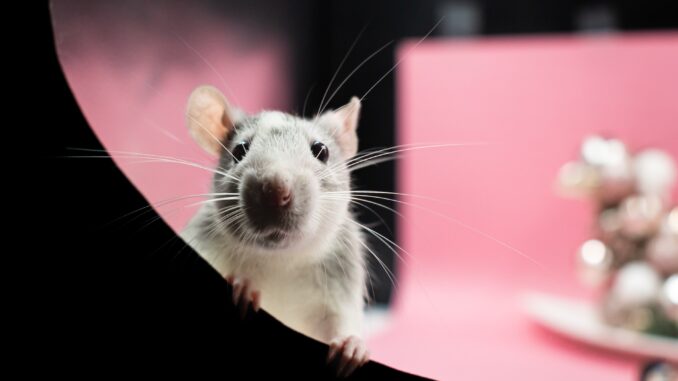
If you’re reading this guide, it’s probably because you’ve just adopted a pet mouse and are wondering what to do next. Whether it’s your first time owning a pet mouse or you’ve had many before, I’m here to help! You may have heard that mice are dirty and disease-ridden creatures, but there are plenty of ways to keep them safe and happy in your home. First things first: what kind of mouse do we have here? If it’s an adult male or female then congratulations! It’s ready for housetraining (which means keeping their waste in one spot). But if it’s still young then don’t worry—they can’t control where they go yet either.
So let me tell you all about how best to care for your new friend!
While many people think of mice as a simple pet, they are much more than that.
Mice can be trained to do tricks and even learn how to use a litter box! They’re social animals that love being around other mice, so it’s best if you get two or three if you want your pet mouse to have friends.
Mice are not rodents; they are mammals (the same family as humans). They have fur instead of scales like reptiles do–so when you pet your mouse it feels soft and fuzzy like wool instead of scaly like a lizard’s skin does. Unlike fish tanks where there is only one type of fish living together because all those types need exactly the same conditions for survival (water temperature), each species has different needs when it comes down to food type preferences etcetera…
Mice are social creatures and should be kept with at least one other mouse.
Mice are social creatures, and they need companionship. A single mouse will be happier with another mouse to play with. In fact, if you plan on keeping your pet mice in a cage together, it’s best if they have some kind of enclosure that allows them to see each other (but not touch). This way they can interact without getting hurt or fighting over territory.
You can keep pairs or groups of three or four mice together in one cage as long as they get along well enough not to fight over food or territory. Mice who aren’t used to living together may need some time before becoming friends; however once two pets become buddies there will always be two friends instead of just one!
Mice should have a large cage to live in and be able to run around and play in.
Your mouse will need a large cage to live in, with enough room for him or her to run around and play. A good rule of thumb is that your mouse’s cage should have 8-10 square feet of floor space and 4-6 inches of bedding material. This allows him or her plenty of room to explore and climb on top of things as well as burrow into their nest at night (or during nap time).
If you don’t want to spend money on buying a new cage, consider using a large plastic bin instead–it works just as well! You can also add extra vertical space by attaching pieces from an old cardboard box onto one side of your bin so that it looks like this:
The cage should have plenty of places for the mouse to hide and climb on.
The cage should have plenty of places for the mouse to hide and climb on. Mice like to hide, so it’s important that the cage has a lot of different areas where they can do so. They also love climbing, so you should make sure there are plenty of things for them to climb on as well.
Your pet mouse will need fresh water available at all times.
Mice can get dehydrated quickly and cannot drink from a water bottle or a water fountain. Water should be changed daily, especially if you have more than one mouse in the same cage. The best way to provide fresh drinking water for your mice is by using an automatic watering system that allows them access to clean drinking water when they want it!
You can get creative with bedding like shredded paper or cardboard pieces but hay is also great!
Hay is a natural source of fiber, which can help prevent hairballs and keep teeth clean. It’s also safe to use as bedding and doesn’t smell. If you feel like getting creative with your mouse’s habitat, try using hay in place of traditional bedding! You can scatter it around the bottom of their cage or line their food dish with it.
As an added bonus, using hay as litter box filler will make cleanup easier because there won’t be any messes on top of the cage floor that need cleaned up later on (though we still recommend scooping out poop daily).
Proper care will help your pet mouse be healthy and happy!
Proper care will help your pet mouse be healthy and happy!
Mice are social creatures and should be kept with at least one other mouse. They also need a large cage to live in, so they can run around and play. A good rule of thumb is that if you have more than one pet mouse, their cage should be at least 4 times the size of their body length (i.e., if your mouse is 4 inches long then the minimum floor space needed for its home would be 16 square inches).
If you want to make sure that your pet mouse is happy and healthy, then it’s important to take good care of them. The first step in doing this is choosing the right type of cage for them. You should also consider getting two mice so they have someone else to play with!
Leave a Reply